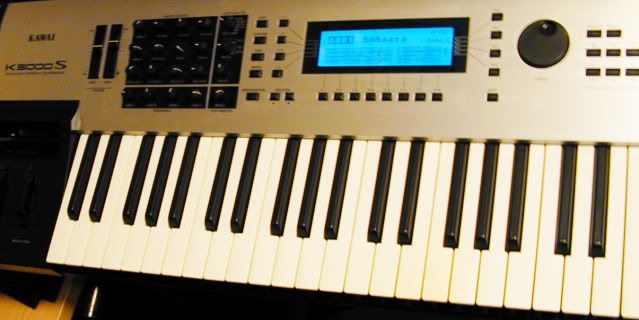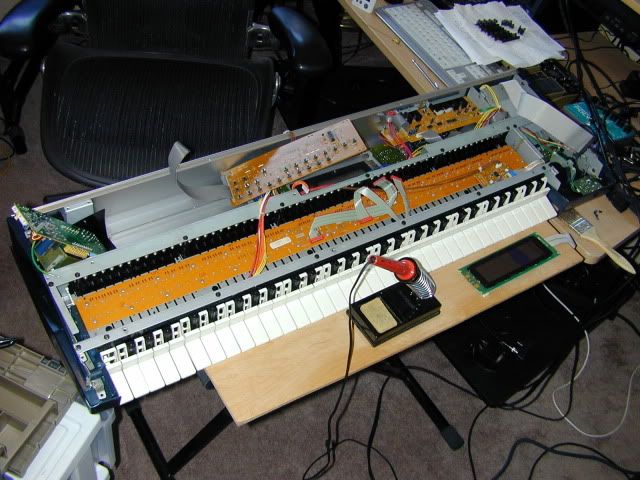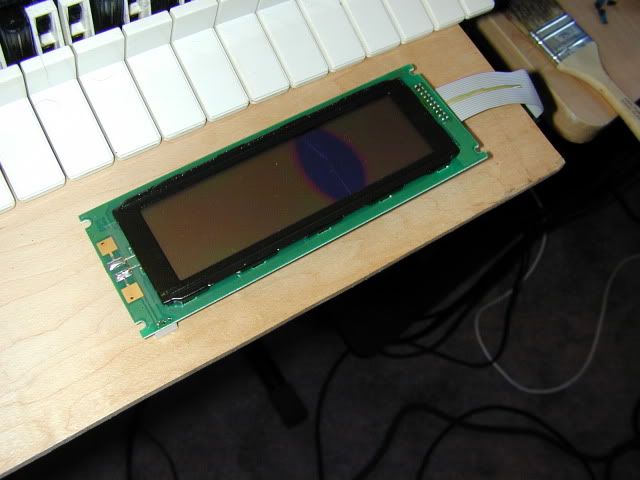A mini-pot in extreme oxidation mode. Nonetheless, it was worth a try to clean the pot w/ several doses of contact cleaner. No luck. Needs replacement, no problem....wrong. The bender pot is an extremely rare vintage 'center tap' variety. Normal pots have three terminals and use a wiper that rotate around a resistor track. 'Center tap' potentiometers add a fourth terminal to the middle of the track. This is done in order to obtain a near-zero-ohm reference point with respect to the wiper at center detent.
I searched many forums and blogs for solutions. There has been some suggestion to take a regular 3-terminal pot and add a small wire to the track and use a 'solder paint pen' for the connection. Admit it, this is the most ridiculous idea. No way it works...right? I couldn't find any sites that documented this process anywhere. Bearing astute craftsmanship, I decided to give this monkey-business a whirl.
First, separate the pot mechanisms from the metal case by prying up 4 small metal tabs just enough to get the pieces apart. Next, the shaft needs to be separated from the wiper assembly. I did this by resting the pot, shaft downward, between the slightly opened jaws of a bench vise. Then I used a nail set and small project hammer to lightly tap the shaft out of the wiper assembly. At this point the shaft, wiper assembly, and resistor track are separated.
 I have a small manual hobby drill, with a teeny-tiny drill bit just the same size as my 24-ga bus wire. I carefully hand-drilled a very small hole just adjacent to the top of the track. Then I passed a small bus wire through. To help stabilize the wire, and prevent soldering activity from disturbing the solder paint connection, I used 5-minute epoxy. I applied a drop of the mixed epoxy at the hole on the side opposite the track (the outside) where the wire passes through the hole. After curing overnight I snipped the bus wire on the track side flush with the track.
I have a small manual hobby drill, with a teeny-tiny drill bit just the same size as my 24-ga bus wire. I carefully hand-drilled a very small hole just adjacent to the top of the track. Then I passed a small bus wire through. To help stabilize the wire, and prevent soldering activity from disturbing the solder paint connection, I used 5-minute epoxy. I applied a drop of the mixed epoxy at the hole on the side opposite the track (the outside) where the wire passes through the hole. After curing overnight I snipped the bus wire on the track side flush with the track.I found this 'solder paint pen' product at radio shack. It's called Circuit Writer and cost $20 which seemed high, but if it gets you out of these impossible jams...I'm starting to think it's worth every penny. I had to shake it for a very long time to get all the juices mixed properly. I tested several times on a piece of cardstock, waiting each time for the stuff to dry, and tested with a Digital Volt-Meter (DMV) continuity-check each time. After 5 or 6 times it finally turned a bright silver color, and gave a near zero-ohm reading on the DMV.
I applied a very small amount of the Circuit Writer to the top of the track where it meets the wire. Its tricky not to get this material on the part of the track the wiper passes over, or the wiper might bind there and deform. That would be bad. After the material dried I tested it using the DMV with one lead on the wire, one on the track. It beeped right away and gave a 0.6-ohm reading...success!
 The VERY IMPORTANT next step was to test fit the wiper track and case, and make sure the bus wire didn't ground-out against the metal case. Unfortunately it did. So to remedy that I applied a small amount of clear finger nail polish to the inside of the case in the vicinity of the bus wire. After drying and testing the fit again, there was no problem.
The VERY IMPORTANT next step was to test fit the wiper track and case, and make sure the bus wire didn't ground-out against the metal case. Unfortunately it did. So to remedy that I applied a small amount of clear finger nail polish to the inside of the case in the vicinity of the bus wire. After drying and testing the fit again, there was no problem.After the finger nail polish had dried, the most difficult part of this project was to carefully assemble the parts back together and tap the shaft back onto the wiper assembly. Then I tested the terminals on the DMV by first testing the three main terminals for ohms. Second I checked the wiper terminal against the new center tap bus wire at center detent and it still read 0.6-ohms...success!
I soldered the new pot in place of the old, put the bender back in the synth, and it actually works! Unbelievable! If your craftsmanship skills working w/ very small parts are up to par, then I could definitely recommend this solution.








